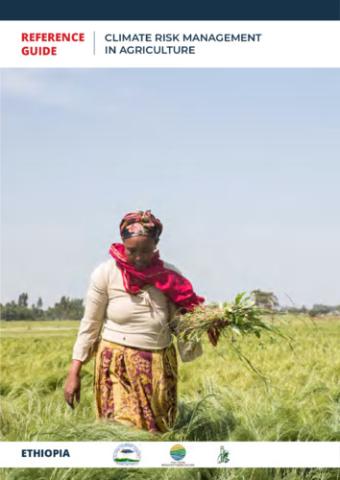Abstract
Climate change and year-to-year climate variability have resulted in widespread, pervasive impacts to ecosystems and people, including increases in the intensity of weather extremes such as droughts and floods. In Ethiopia in particular,
shifting and varying temperature and precipitation patterns have affected the productivity of many climate-sensitive sectors, but especially agriculture, resulting in reduced food availability and increased food prices, ultimately jeopardizing food
security, nutrition, and livelihoods of millions of people. Because over 85% of the population representing more than 70 million people are reliant upon the rain-fed agriculture sector for their livelihoods, the implications of the climate in Ethiopia are particularly pronounced. It is here that climate extremes such as drought have caused widespread failure of seasonal crops, inadequate forage and massive deaths of livestock in pastoralist communities, and hunger resulting emergency food aid averaging $1.1. billion per year. And it is here that even in the absence of extremes, changing seasonal characteristics—such as rainy season onset, cessation, and duration of the rainy season—necessitates the use of climate information to inform routine agricultural policy, planning, and practice. Despite the enormous role that climate information can and has played in supporting resilience of agricultural and food systems and the availability of high-quality climate information in Ethiopia for more than a decade, however, the effective use of climate information in decision-making processes to manage risks associated with climate variability and adaptation to climate change has remained limited. This reality persists in spite of a robust policy and enabling environment following significant investments in climate information and services through national and sectoral strategies, policies, and programs such as the Climate Resilient Green Economy (CRGE) strategy, the National Adaptation Plan (NAP), the second Five-Year Growth and Transformation Plan (GTP-II), the Agricultural Sector Policy and Investment Framework (PIF), and two phases of the Agricultural Growth Program (AGP). Part of the problem stems from a lack of foundational capacity and common understanding of climate basics, including a shared vocabulary and knowledge of basic terminology and dynamics to both articulate and engage in meaningful collaborations and design of climate solutions. Another part stems from the reality that even when available, climate information may not be easily accessible or transformed to decision-relevant formats for those working in the agricultural sector to act upon, or that there is poor awareness of products that do so. Still, another major issue with the exploitation of climate information for agricultural decision-making lies with poor understanding of how climate impacts agriculture and the pragmatic climate-sensitive decisions that farmers and the network of actors that support them must make as a result of these impacts. Because its graduates go on to work with and even lead initiatives with key institutions and actors within the agriculture and food system—such as the agricultural extension system, non-profits, development organizations, and disaster risk management and reduction agencies—the formal education system and especially agricultural universities in Ethiopia have an enormous role to play in addressing these challenges. Moreover, beyond a theoretical understanding and knowledge of these challenges and potential solutions, they can play a catalytic role in advancing the practical skills needed to analyze, assess, and ultimately address climate-related challenges in the agriculture and related sectors. Acknowledging these gaps and the resultant enormous opportunity to capacitate the agricultural sector with the knowledge and skills that can support climate resilience, the Climate Risk Management in Agriculture (CRMA) short course and this supporting Reference Guide aim to equip students interested in working in climate-sensitive sectors with the key competencies they need to support climate-informed actions and decisions in practice. In doing so, the course emphasizes pragmatic, hands-on skills and approaches needed to manage risk associated with climate variability and change, while also laying the theoretical framework underpinning these skills.

